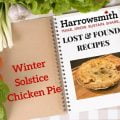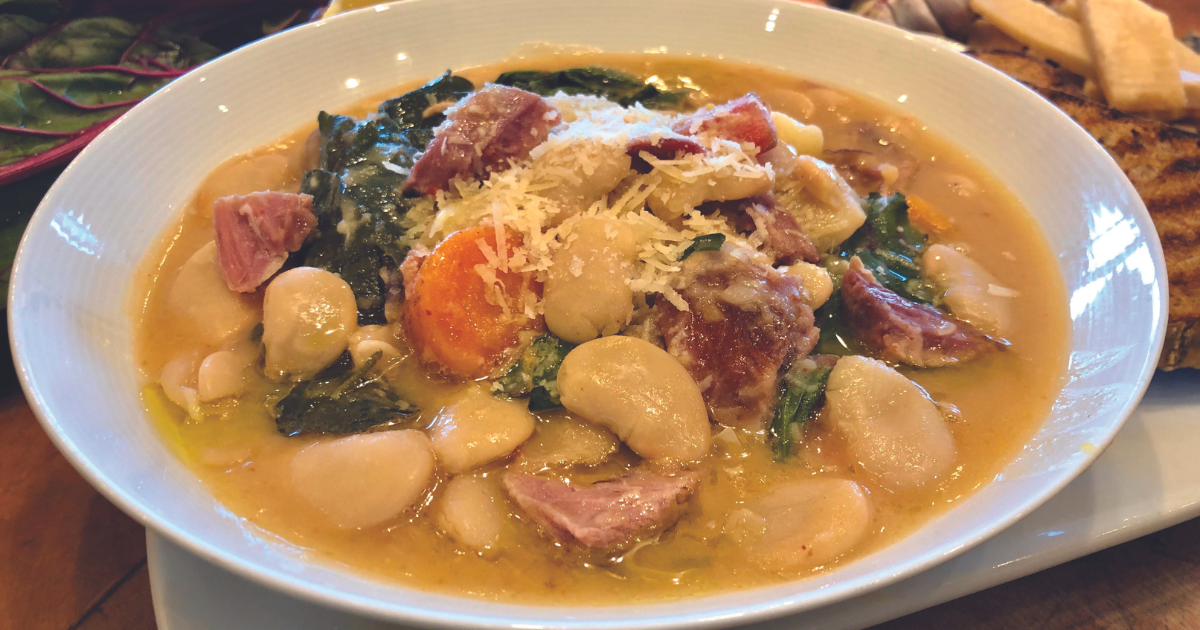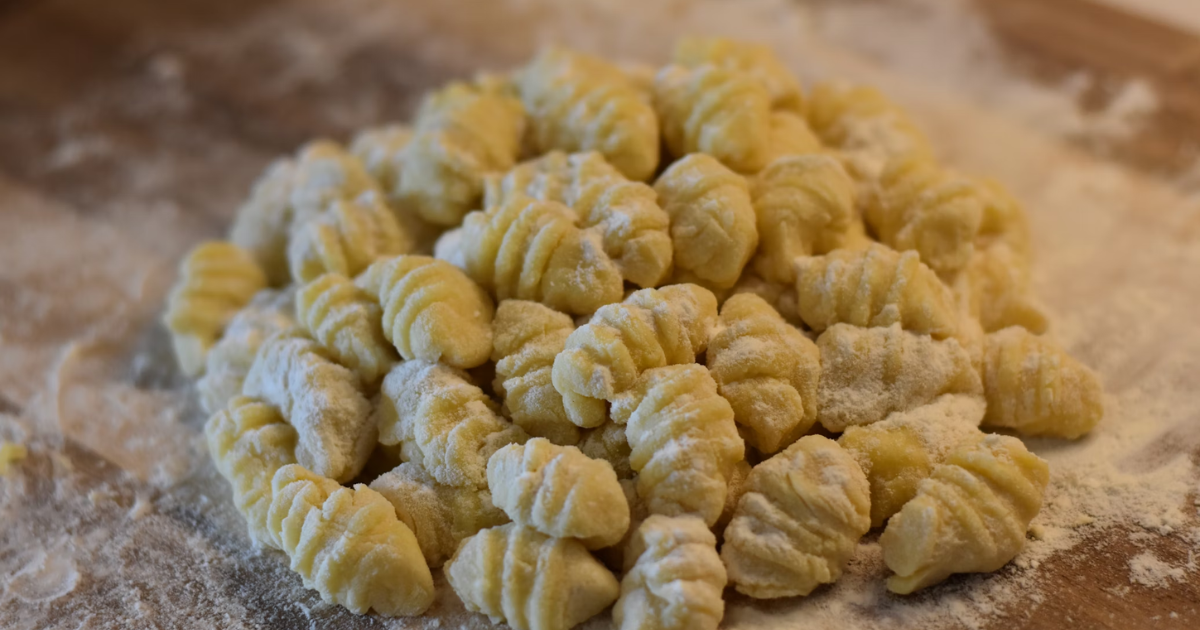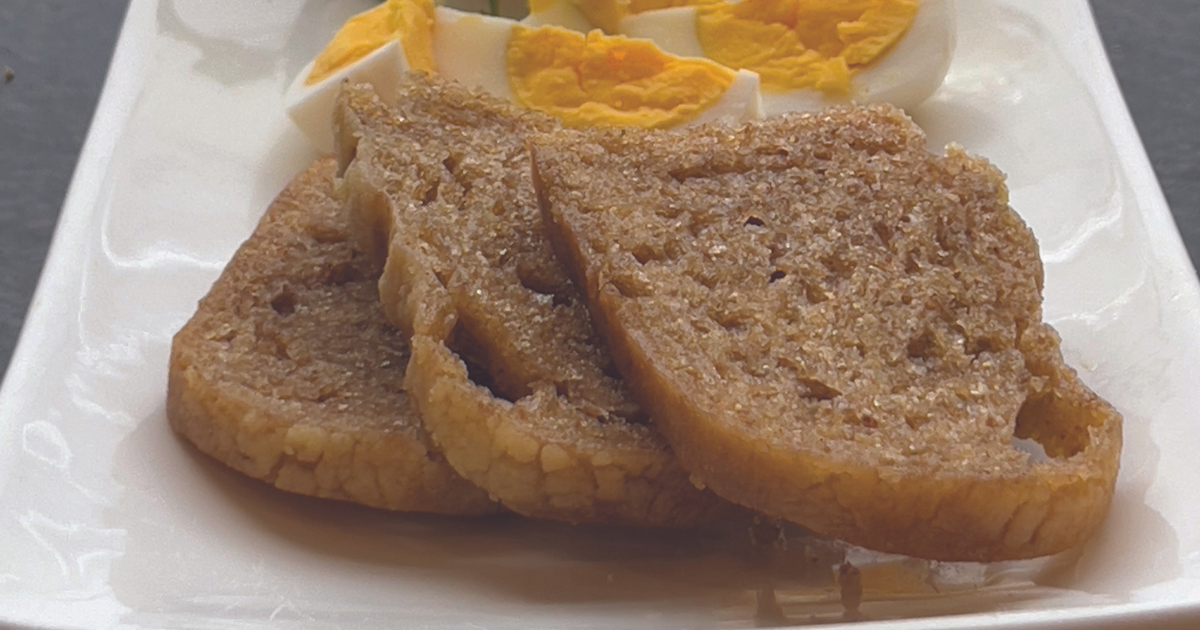Until recently, the cottage hadn’t been a place to entertain for us. Then the new neighbours moved in and turned everything upside down. Now we look forward to it!
As relative newcomers to cottage entertaining, my mister decided we may as well start a tradition, and that tradition would be campfire paella! For those who don’t know, paella is a dish from Spain that generally consists of rice, seafood, and saffron. Having said that, there are countless variations, though traditionalists would say chorizo is a no-no. Traditionally, paella is cooked over a campfire, though there are gas-powered tripod burners, and flat-bottomed pans that lend themselves to more convenient methods.

The rounded bottom and thin metal of the traditional paella (paella is the name of both the dish and the pan, so saying “paella pan” is superfluously redundant. Now you know.), lend themselves to campfire cooking. For the veggie version of this dish, we used a cast iron pan and it worked very well.
Now be careful! Paella is fantastic, BUT as my little one (and myself) can tell you, too much of a good thing is just too much! We love the mister but he tends to become obsessed with any new recipe he likes. Before the campfire was involved, paella made it onto the dinner table at least twice a week while he was mastering it! Keeping the paella tradition at the cottage has made it a wonderful treat that can be shared with others. We like to pair paella with a fancy Finotini, a savoury tomato juice and gin cocktail that will have all the neighbours talking!

Cottage Campfire Paella
You’re dealing with live fire, so it takes a few times to get this right. I suggest using just rice, oil, and stock with cheap vegetables for the first few attempts.

Ingredients
For the Cauliflower Purée:
1/2 head of cauliflower, grated
500mL 35% cream
3 lemons juiced
4 cloves garlic, peeled
For the Migas:
1/4c canola oil
1c panko
1T thyme
1 lemon juiced
TT salt (*TT=To taste)
TT pepper
For the Paella:
1kg. Short grain rice (Bomba is best, arborio is acceptable)
- 3L fish stock
- 2L water (just in case)
- 1 onion diced
- 5 cloves of garlic finely sliced
- 2 zucchini diced
- 20 mushrooms quartered
- 1 eggplant diced
- 1/2c canola oil
- 2g saffron
- 1T smoked paprika
- 2T thyme
- 1 bunch asparagus, trimmed
- 1 jar piquillo peppers
- 500g peeled deveined shrimp
- 1kg mussels (beards removed)
- TT kosher salt
- TT ground black pepper
- 1 or 2 fresh lemons
Method
For the Cauliflower Purée:
Put all ingredients in a pot and simmer until the cauliflower is complete mush. Then purée in a blender or with an immersion blender.
For the Migas:
Put oil in the pan on medium heat, wait for ripples, then add all the ingredients. Stir until the panko is light golden brown. Remove from heat and put directly into your serving dish, lest the panko burn.
For the Paella:
Start by burning a bunch of logs about half an hour before you plan to start your paella. This will ensure the fire isn’t too hot when you put on the pan.
Add the oil to the pan and watch for ripples in the oil.
Add onion, garlic, mushrooms, eggplant, zucchini, and cook until lightly browned and soft. Add rice, and stir, making sure to coat it with oil.
Add saffron, smoked paprika, and thyme, and stir.
Add stock.
Add salt and pepper to taste. Note that it’ll be more salt than you might think.
Add shrimp, then mussels.
Add asparagus and piquillo peppers.
Use water to adjust consistency. Because this is live fire, the stock may evaporate before the rice has cooked. This is where we add water. We may not have to add any water. It all depends on how hot the fire is and how close the pan is to the fire. If it continues to evaporate too quickly, you may have to remove the pan from the heat, and wait until the fire dies down, which is a great opportunity to converse with your guests. And, make another round of Finotinis!

Finotini
1 part filtered tomato juice
1 part Alvear fino sherry
1 part Hendricks gin
3 sour pickled onions to garnish
Large ice sphere
Filter the tomato juice through a coffee filter. It will take a bit of time. Be patient.
Mix the juice, sherry and gin together.
Done!
Make sure everyone has a large ice sphere! This is best serve COLD.

Equipment
18” paella
Fire grate
Long wooden spoon
Sticks capable of moving logs
A fire pit that meets the regulations in your area for a contained wood fire
A few logs, kindling, tinder, and a match or ten (depending on wind).
At the opulent Langdon Hall Country House Hotel and Spa in Blair, Ontario, the kitchen behind the province’s only five-diamond restaurant never closes. At 2 am, you’ll find Pastry Chef Rachel Nicholson starting her shift, ensuring all the savoury breads for the day are freshly baked.
Nicholson graduated from the pastry program at Northwest Culinary Academy of Vancouver in 2006 and has led a devout pastry team of 12 at the Relais and Chateaux property since 2013. In 2016, Nicholson accompanied Langdon Hall’s Executive Chef Jason Bangerter to Cacao Barry’s Or Noir lab in Paris, France, to create the hotel’s signature decadent chocolate, “Terroir.”













